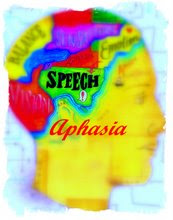Progressive Aphasia
Progressive Nonfluent Aphasia (PNFA) is a language disorder separate from aphasia resulting after a stroke. It is also called Primary Progressive Aphasia (PPA) or Agrammatic Aphasia and is reviewed here. Some consider Semantic Dementia a progressive aphasia, and it is reviewed separately.
The presenting feature in people with PNFA is a deterioration in their ability to produce speech. These patients first become hesitant in their speech, begin to talk less, and eventually become mute. Current research suggests that the fundamental loss in PNFA is a deterioration in knowledge of the grammatical organization and the production of sounds for language.
Unlike other FTD subtypes, PNFA generally does not produce changes in behavior or personality until later stages of the disease. Most people with progressive aphasia maintain the ability to care for themselves, keep up outside interests and, in some instances, remain employed for a few years after onset of the disorder.
Key Clinical Features
The aphasia in PNFA is experienced as hesitant, effortful speech. Despite this difficulty, it appears that patients’ ability to comprehend what others say is preserved longer, though this is eventually lost, as well.
* Increased difficulty producing speech due to weakness or incoordination – speech sounds weak, imprecise and uncoordinated.
* Reading and writing abilities may be preserved longer than speech, but these eventually decline, as well.
* Difficulty swallowing is often present.
Neuroimaging studies demonstrate decreased neural activity and decreased blood flow, especially in the left frontal lobe.
In later stages, clinical features may include ones found more commonly in other FTD subtypes, particularly extrapyramidal syndromes such as corticobasal degeneration (CBD) and progressive supranuclear palsy (PSP).
Key Pathologic Features
It is important to note that PNFA is a clinical diagnosis, defined by the symptoms the patient displays. It is common to have abnormal tau collections that differ from those of Alzheimer’s disease (FTLD-T). Loss of brain volume in the left frontal and parietal areas is also characteristic.
Genetics
PNFA can be sporadic, familial, or hereditary. The majority of PNFA cases are not hereditary.
Treatment
Mutism eventually develops with progression. As with all forms of FTD, there is no cure for PNFA, and in most cases its progression cannot be slowed. Physicians suggest targeting behavioral disturbances as necessary (eg. obsessive-compulsive behaviors, such as hoarding or craving sweets). Some physicians will give a trial of amantadine to ease the flow of speech, but this use has not been proven yet in a formal placebo-controlled drug trial. In one placebo controlled randomized study the cholinesterase inhibitor Reminyl (galantamine), significantly slowed deterioration and in some cases improved language function.
Management and Prognosis
Although no studies have shown improvement or slowing of progression when a patient works with a speech and language pathologist (SLP), many centers work with SLPs to hone the diagnosis of PNFA or semantic dementia and to research potential therapeutic interventions.
Some PNFA patients develop the behavioral, social, and/or motor complications seen in other forms of FTD. In these patients, prognosis is obviously poorer, and management more complicated. Patients who do not develop these additional symptoms are able to preserve their independence and active lifestyle for a longer period of time. more read...
Sunday, April 17, 2011
Subscribe to:
Post Comments (Atom)



No comments:
Post a Comment